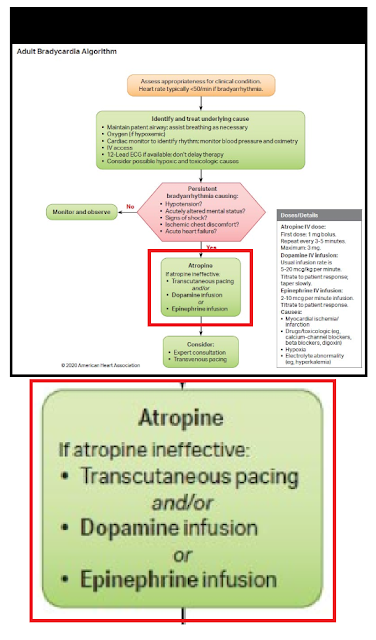順手查了一篇2023年8月的paper. 關於急性鼻竇炎定義. 四周內屬於急性.
而要診斷急性鼻竇炎. 症狀通常持續 10 天以上.
google中文翻譯如下(原文在下面, 僅節錄片段)
急性鼻竇炎是一種臨床診斷。臨床醫生最常需要區分 VRS 和 ABRS,這對於確保負責任地使用抗生素至關重要。需要闡明青黴素不敏感肺炎鏈球菌的當地抗藥性模式和盛行率。
成人鼻竇炎的常規診斷標準是患者至少有兩種主要症狀或一種主要症狀加上兩種或多種輕微症狀。兒童的標準相似,只是更注重鼻分泌物(而非鼻塞)。
主要症狀
- 前鼻流膿性分泌物
- 後鼻涕膿性或變色
- 鼻塞或阻塞
- 臉部充血或飽滿
- 臉部疼痛或壓力
- 嗅覺減退或嗅覺喪失
- 發燒(僅適用於急性鼻竇炎)
輕微症狀:
- 頭痛
- 耳朵疼痛或有壓力或飽脹感
- 口臭
- 牙齒疼痛
- 咳嗽
- 發燒(亞急性或慢性鼻竇炎)
- 疲勞
可以使用以下臨床指導將 ABRS 與 VRS 區分開來[4] [6] [1] [3]:
- 症狀持續十天以上
- 發病時持續 3 至 4 天高燒(超過 39°C 或 102°F),伴隨膿性鼻涕或臉部疼痛
- 前十天內症狀加倍惡化
一般不需要進行常規實驗室評估。囊性纖維化、纖毛功能障礙或免疫缺陷的評估是頑固性、復發性或慢性鼻竇炎的考慮因素。 有證據顯示 ESR 和 CRP 升高可能與細菌感染有關。
大於或等於 10 CFU/mL 的內視鏡抽吸培養物被視為黃金標準。然而,這對於診斷來說並不是必需的,並且對於絕大多數 ABRS 病例也沒有這樣做。鼻和鼻咽培養物的實用性較低,因為它們與內視鏡抽吸物的相關性較差。轉診內視鏡抽吸對於難治性病例或多種抗生素過敏的患者可能有用。
除非臨床上擔心併發症或替代診斷,否則沒有必要對急性鼻竇炎進行影像學檢查。竇平片通常不能用於檢測發炎。它們可能會顯示空氣-液體水平。然而,這無助於區分病毒與細菌病因。如果懷疑有併發症或替代診斷,或患者反覆出現急性感染,則應進行鼻竇 CT 影像,以評估骨骼、軟組織、牙齒或其他解剖異常或是否有慢性鼻竇炎。這些應該在適當的治療過程結束時獲得。鼻竇 CT 可顯示氣液水平、混濁和發炎。鼻竇黏膜增厚超過 5 毫米則表示有發炎。 它還可以有效評估骨侵蝕或破壞。然而,這些發現也無助於區分病毒與細菌病因。 MRI 比鼻竇 CT 提供更多細節,可以評估軟組織或幫助闡明腫瘤。因此,MRI 可能有助於確定眼眶或顱內擴展等病例的併發症程度。
Evaluation
Acute rhinosinusitis is a clinical diagnosis. The clinician most commonly needs to distinguish between VRS and ABRS, which is crucial to ensure the responsible usage of antibiotics. Local resistance patterns and prevalence of penicillin non-susceptible S. pneumoniae requires elucidation.
Conventional diagnostic criteria for rhinosinusitis in adults is the patient having at least two major or one major plus two or more minor symptoms. The criteria in children are similar except that there is more of an emphasis on nasal discharge (rather than nasal obstruction).Major symptoms:Purulent anterior nasal discharge
Purulent or discolored posterior nasal discharge
Nasal congestion or obstruction
Facial congestion or fullness
Facial pain or pressure
Hyposmia or anosmia
Fever (for acute sinusitis only)
Minor symptoms:Headache
Ear pain or pressure or fullness
Halitosis
Dental pain
Cough
Fever (for subacute or chronic sinusitis)
Fatigue
ABRS can be differentiated from VRS using the following clinical guidance[4][6][1][3]:Duration of symptoms for more than ten days
High fever (over 39 C or 102 F) with purulent nasal discharge or facial pain that last for 3 to 4 consecutive days at the beginning of the illness
Double worsening of symptoms within the first ten days
Routine laboratory assessment is generally not necessary. Evaluation for cystic fibrosis, ciliary dysfunction, or immunodeficiency are considerations for intractable, recurrent, or chronic rhinosinusitis. There is some evidence that an elevated ESR and CRP may be associated with a bacterial infection.
The culture of endoscopic aspirates with greater than or equal to 10 CFU/mL is considered the gold standard. However, this is not necessary for diagnosis and not done for the vast majority of cases of ABRS. Nasal and nasopharyngeal cultures are of low utility due to their poor correlation with endoscopic aspirates. Referral for endoscopic aspiration can be useful for refractory cases or patients with multiple antibiotic allergies.
Imaging for acute sinusitis is not necessary unless there is a clinical concern for a complication or alternative diagnosis. Sinus plain films are generally not useful in detecting inflammation. They may show air-fluid levels. However, this does not help differentiate viral versus bacterial etiologies. If a complication or alternative diagnosis is suspected, or if the patient has recurrent acute infections, then sinus CT imaging should be obtained to assess for bone, soft tissue, dental, or other anatomical abnormalities or the presence of chronic sinusitis. These should be obtained at the end of an appropriate treatment course. Sinus CT may show air-fluid levels, opacification, and inflammation. A thickened sinus mucosa over 5 mm is indicative of inflammation. It can also effectively assess bony erosion or destruction. However, these findings are also not helpful in differentiating viral versus bacterial etiologies. MRI offers more detail than sinus CT to evaluate soft tissue or help elucidate a tumor. Thus, MRI may be helpful to determine the extent of complications in cases such as an orbital or intracranial extension.
參考資料: 成人急性細菌性鼻竇炎治療指引檔案下載
這篇是刊登於家庭醫學與基層醫療第二十八卷第5期(102 年 5 月 25 日)
雖資料有點陳舊., 不過需修改的地方不多.
(家庭醫學與基層醫療期刊總目錄)



參考資料 Acute sinusitis and rhinosinusitis in adults: Clinical manifestations and diagnosis uptodate
2023-12-29 10:02AM
病毒性鼻竇炎. 症狀通常小於10天.
Acute viral rhinosinusitis — Acute viral rhinosinusitis (AVRS) is diagnosed clinically when patients have <10 days of symptoms consistent with ARS that are not worsening [2].
細菌性鼻竇炎.
Acute bacterial rhinosinusitis — We use the following criteria to diagnose acute bacterial rhinosinusitis (ABRS), which are derived from the American Academy of Otolaryngology-Head and Neck Surgery guidelines and the Infectious Diseases Society of America guidelines [2,16]:
診斷標準(符合其中一項)
1. 症狀持續超過 10 天沒有改善
2. 感冒症狀持續超過十天. 期間症狀改善, 第五六天後又變嚴重.
●Persistent symptoms or signs of ARS lasting 10 or more days without evidence of clinical improvement or
●A biphasic pattern of illness, typically extending over a 10-day period, characterized by signs and symptoms of ARS that initially start to improve but then worsen approximately five to six days later ("double worsening").
嚴重感染症狀. 持續性高燒超過 39°C. 膿狀鼻涕. 顏面疼痛 3-4 天以上
但並非症狀嚴重就需要吃抗生素
The onset of severe symptoms or signs of severe illness (eg, high fever [>39°C or 102°F], purulent nasal discharge, facial pain) for at least three to four consecutive days at the beginning of illness supports the diagnosis of ABRS. However, severity of illness alone is not sufficient criteria for starting antibiotics.
並非每個患者都需要做影像檢查. 鼻腔細菌培養, 鼻竇抽吸,
當懷疑患者發生併發症才需要做.
Imaging, nasal cultures, sinus aspirates, and other microbiologic testing are not indicated for patients with clinically diagnosed uncomplicated AVRS or ABRS [2,16]. These tests are reserved for patients with suspected complications.
Other guidelines use varying criteria to diagnose ABRS. These criteria may be based on specific symptoms or duration of illness [37,38].



















